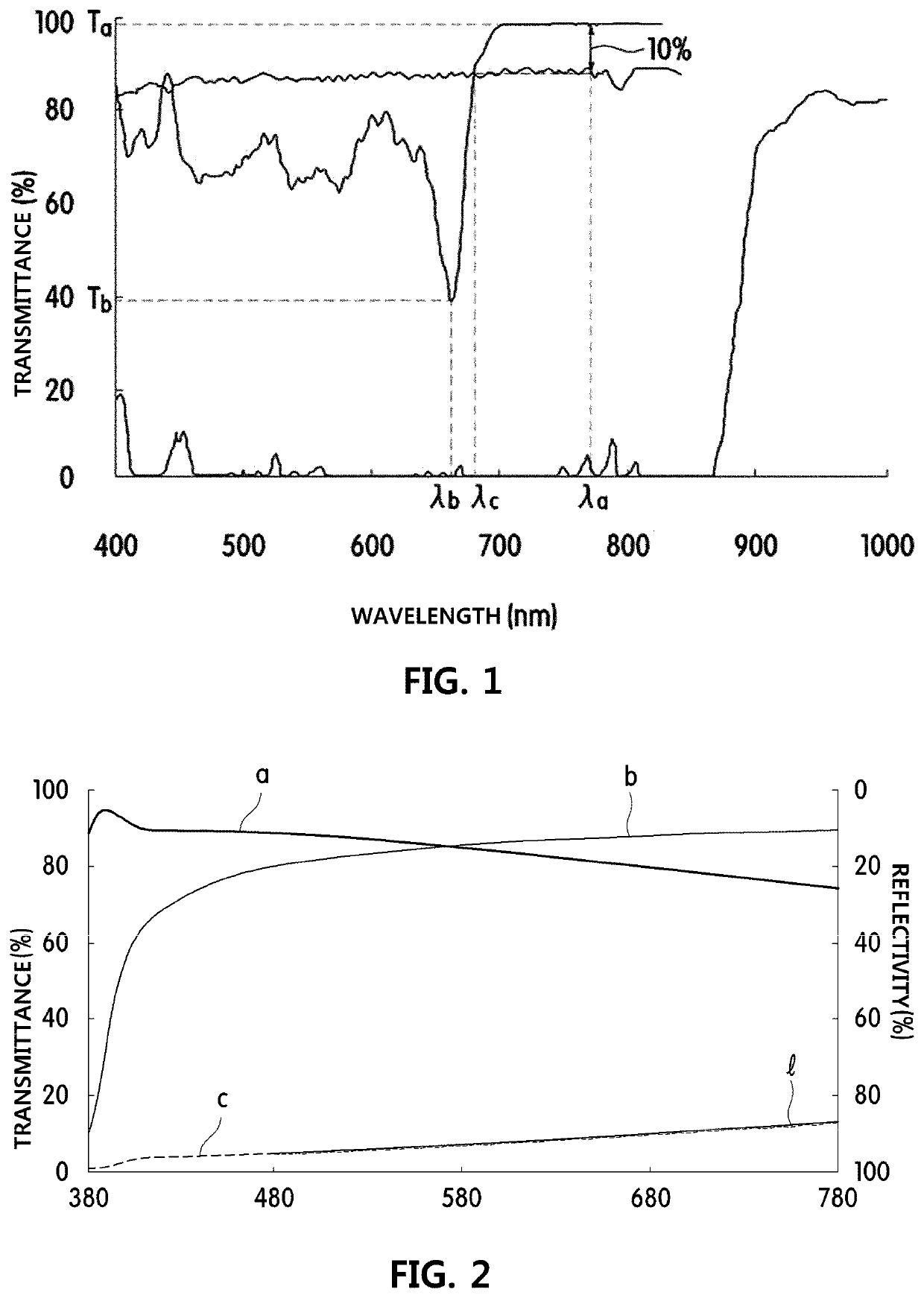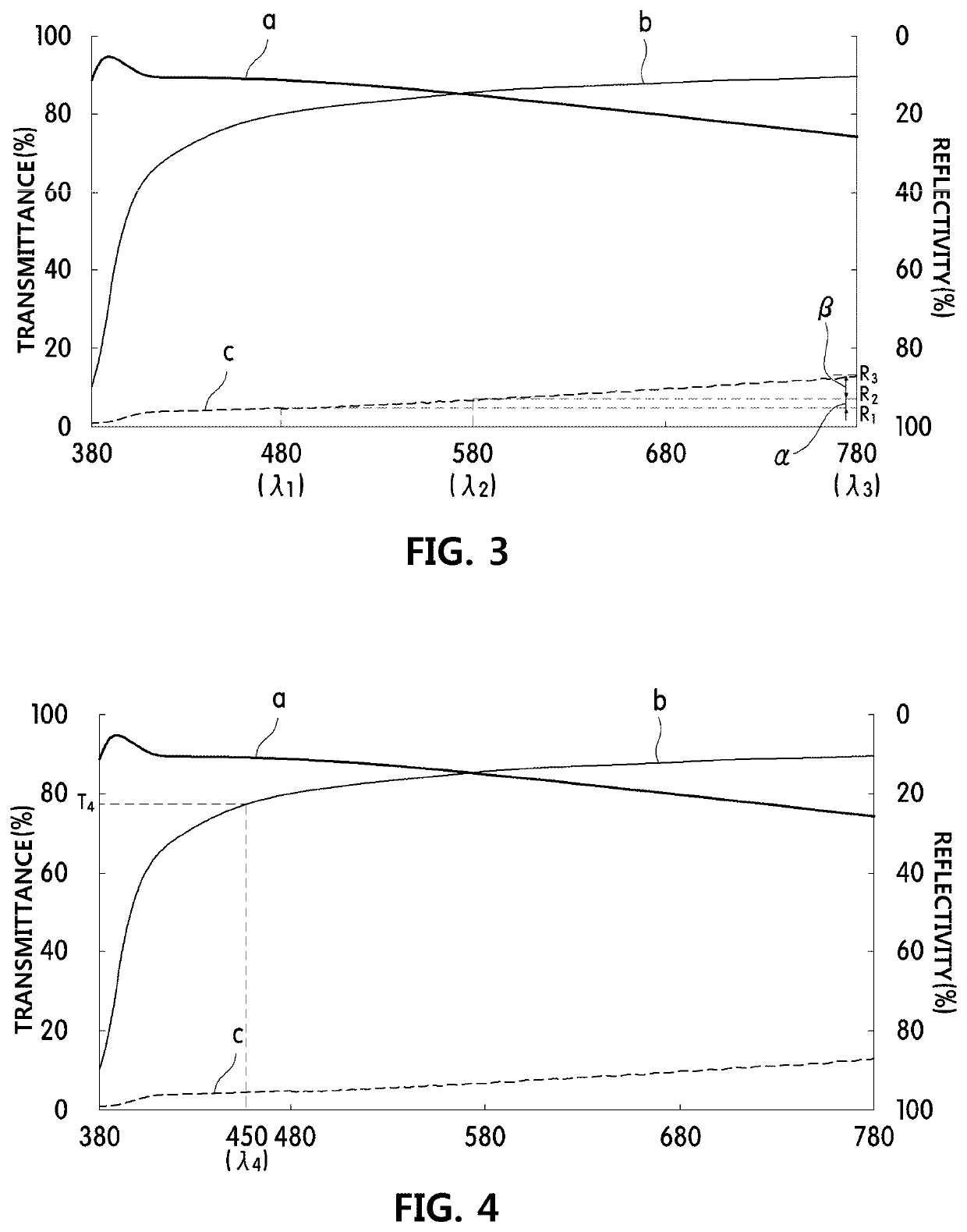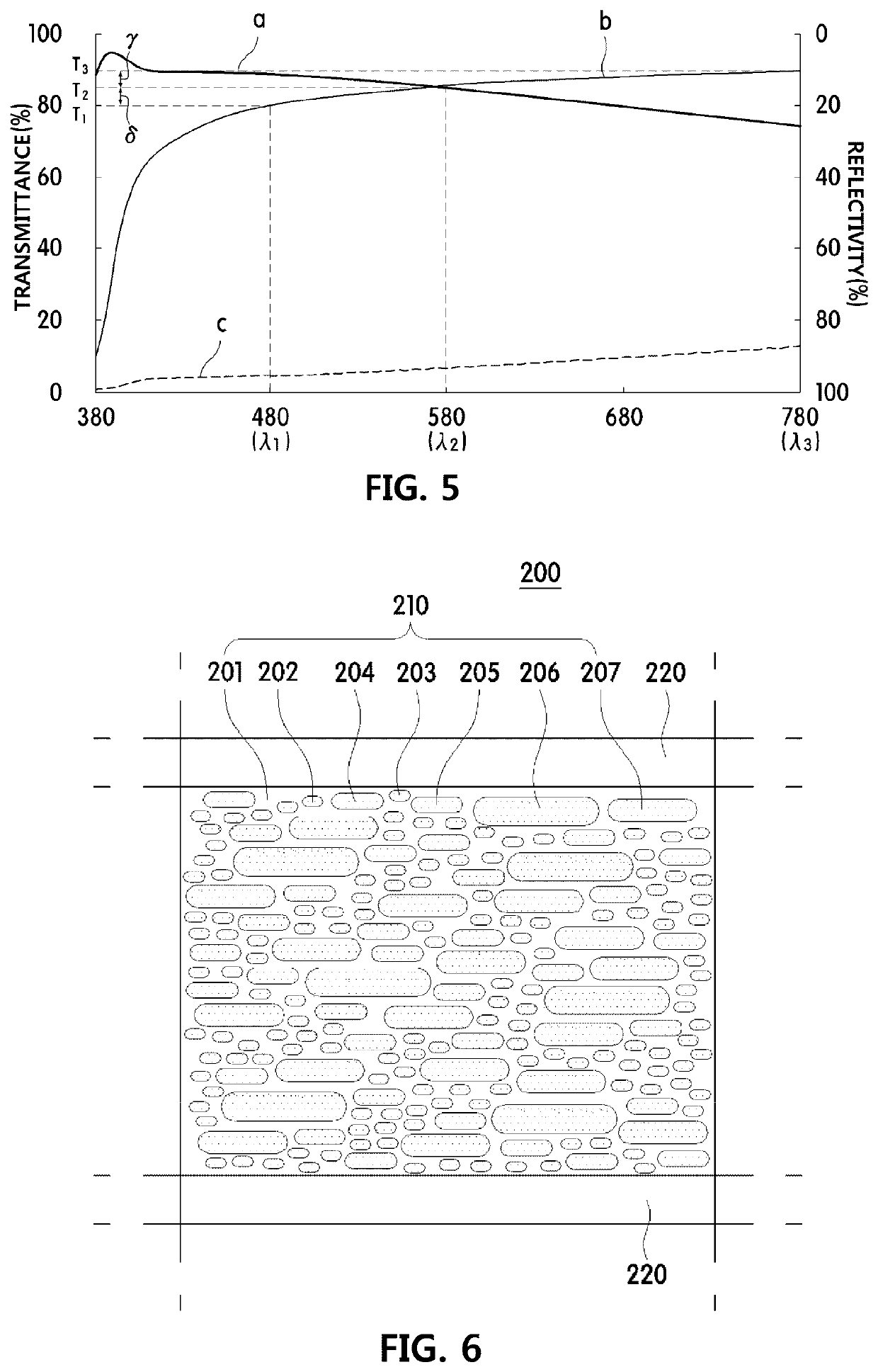Reflective polarizer and backlight unit including same
a technology of reflector and backlight unit, which is applied in the direction of polarizing elements, instruments, optics, etc., can solve the problems of reduced light transmission efficiency of target polarized light to be transmitted through the reflective polarizer, increased untargeted polarized light transmission, and reduced light transmission efficiency of optical films used in lcd, etc., to achieve excellent and uniform brightness, and uniform transmission of targeted polarized light within the visible light wavelength rang
- Summary
- Abstract
- Description
- Claims
- Application Information
AI Technical Summary
Benefits of technology
Problems solved by technology
Method used
Image
Examples
example 1
[0146]PEN having a refractive index of 1.65 as a component of a dispersed body and a raw material containing 38 wt % of polycyclohexylene dimethylene terephthalate (PCTG), in which terephthalate, ethyl glycol, and cyclohexane dimethanol were polymerized at a molar ratio of 1:2 in 60 wt % of polycarbonate, and 2 wt % of heat stabilizer containing phosphate as a component of the base material were introduced into a first extruded portion and a second extruded portion, respectively. A raw material containing 38 wt % of PCTG, in which terephthalate, ethyl glycol, and cyclohexane dimethanol were polymerized at a molar ratio of 1:2 in 60 wt % of polycarbonate, and 2 wt % of a heat stabilizer containing phosphate as a component of a skin layer was introduced into a third extruded portion.
[0147]An extrusion temperature of the component of the base material was set to 280° C., and an extrusion temperature of the component of the dispersed body was set to 245° C., and Cap. Rheometer was used ...
experimental example 1
[0152]The following physical properties were evaluated for the reflective polarizers manufactured through the above example and the comparative example, and results thereof are shown in Table 1.
[0153]1. Measurement of transmittance of first polarized light and second polarized light according to 45° non-normal line incidence and 90° normal line incidence
[0154]In order to measure the transmittance, a polarimeter (Jasco V7100) was used. Specifically, a sample cell was mounted on an apparatus at 45° and 90° with respect to incident light, and then the transmittance and the polarization degree of the first polarized light and the second polarized light for each wavelength were measured.
[0155]Further, the transmittance of the first polarized light and the second polarized light at 45° incident angle for each wavelength in Example 1 are shown in FIG. 2.
[0156]2. Relative Brightness
[0157]The brightness of the manufactured reflective polarizer was measured as follows. Panels were assembled o...
PUM
| Property | Measurement | Unit |
|---|---|---|
| reflectivity | aaaaa | aaaaa |
| incident angle | aaaaa | aaaaa |
| wavelength range | aaaaa | aaaaa |
Abstract
Description
Claims
Application Information
 Login to View More
Login to View More - R&D
- Intellectual Property
- Life Sciences
- Materials
- Tech Scout
- Unparalleled Data Quality
- Higher Quality Content
- 60% Fewer Hallucinations
Browse by: Latest US Patents, China's latest patents, Technical Efficacy Thesaurus, Application Domain, Technology Topic, Popular Technical Reports.
© 2025 PatSnap. All rights reserved.Legal|Privacy policy|Modern Slavery Act Transparency Statement|Sitemap|About US| Contact US: help@patsnap.com



